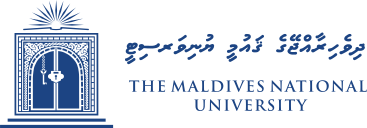
15296 results
Discover | ހޯއްދަވާ
Recent Submissions
Sustainable development goals report 2024
(The Maldives National University, 2024) The Maldives National University; ދިވެހިރާއްޖޭގެ ޤައުމީ ޔުނިވަރސިޓީ
ފިސްކަލް ހިރާސްތަކުގެ ބަޔާން (2023)
(މިނިސްޓްރީ އޮފް ފިނޭންސް, 2023) މިނިސްޓްރީ އޮފް ފިނޭންސް; Ministry of Finance
!ދަރިފުޅާ!! ވައްޗޭ! ނުވައްޗޭ
(އަޝްރަފް ޢަލީ, 2025-05-12) އަޝްރަފް ޢަލީ; Ali, Ashraf
.ދިވެހިބަހުން ބުނާށެވެ. ލިޔާށެވެ. ވާހަކަ ދައްކާށެވެ
(އަޝްރަފް ޢަލީ, 0001) އަޝްރަފް ޢަލީ
Teachers' TPACK and Technology Integration in Teaching and Learning: A Case Study in The Maldives
(2022) Aminath Waseela; އާމިނަތު ވަސީލާ
A significant policy agenda in the Maldives has recently been directed towards improving education for all by leveraging digital technology. In line with these policy directives, the Ministry of Education has been providing schools with both technology infrastructure and training programs. However, research has shown that the success of technology integration initiatives hinges on the knowledge and skills of teachers to effectively integrate technology in classroom teaching. Consequently, gaining an understanding of teachers' technology knowledge and its integration can provide valuable insights into strategies that can be adopted to enhance teaching, especially in developing country contexts such as the Maldives, where research is limited.
This explanatory mixed-method study investigated Maldivian secondary education teachers' knowledge and integration of digital technology in teaching and learning. Specifically, the study explored three research questions: (1) Maldivian in-service teachers’ perceptions of the constructs of the Technological Pedagogical and Content Knowledge (TPACK) framework, (2) how teachers implement technologies in their classrooms and the perceived impact on students' cognitive engagement, and (3) the factors that influence teachers' technology integration in classroom teaching.
Phase one involved survey data from 485 in-service teachers from across the country to understand their perceptions of TPACK constructs. Phase two consisted of qualitative data collected through semi-structured interviews and document artefacts from nine purposively selected teachers representing schools in both the capital city and island communities. The data were analyzed using a tri-theory framework comprising TPACK (Mishra & Koehler, 2006), SAMR (Puentedura, 2012), and Bloom’s Digital Taxonomy (Churches, 2008).
Findings indicated that teachers generally had a high perception of TPACK and its related constructs. However, qualitative data revealed that a high perception of TPACK did not necessarily translate into frequent or meaningful technology integration. Teachers often used digital technologies for teacher-centred practices supporting lower-order cognitive skills. Contextual factors—including teachers’ beliefs and attitudes, institutional support, resource availability, time allocation, and national ICT policies—significantly influenced technology integration across micro, meso, exo, and macro levels.
This study contributes to the growing body of literature on TPACK by providing insights from a Small Island Developing State (SIDS) context. It also proposes a tri-theory framework combining TPACK, SAMR, and Bloom’s Digital Taxonomy to guide the transformation of pedagogical practices toward meaningful, technology-enhanced learning. Recommendations are made for teachers, school leaders, and policymakers to improve technology-supported teaching and learning in the Maldives.
އިޚުތިލާފީ މައްސަލަތަކުގައި ވަކި ރައުޔަކަށް ނުވުން
(މިހާރު, 2017-09-30) ސަޢުދުﷲ ޢަލީ; Ali, Saudhullah
Perception and influencing factors of E-cigarette use among young adults in H.Dh. Hanimaadhoo, Maldives
(2023) Mohamed, Shaziya; ޝާޒިޔާ މުޙައްމަދު
ދުސްތޫރީ ނިޒާމު އިސްލާމީ މަންހަޖާ އެއްގޮތް ކުރުން
(މިހާރު, 2019-04-05) ސަޢުދުﷲ ޢަލީ; Ali, Saudhullah
